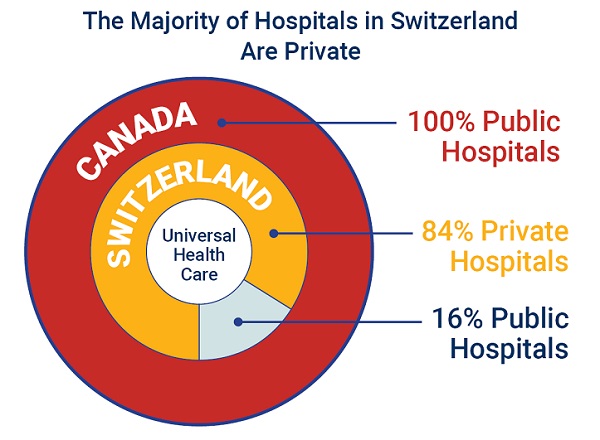Mental Health
Headline that reads ‘Ontario must pay for surgery to give trans resident both penis and vagina: appeal court’ a sign of the times in Canada

From LifeSiteNews
Gender ideology so entrenched, surgical mutilation is no longer considered fringe
If you’d like a glimpse of what 10 years of progressive rule has done to Canada in a single sentence, I submit to you this April 24 headline: “Ontario must pay for surgery to give trans resident both penis and vagina: appeal court.”
Imagine reading a headline like that in, say, 2010. You’d wonder what country you were living in — that is, if you weren’t trying to figure out what you just read. But in Canada in 2025, this stuff isn’t fringe. It’s establishment.
The Ontario Court of Appeal, the province’s top court, issued a ruling this week stating that the province must pay for a “penile-sparing vaginoplasty” for a resident who identifies as transgender but does not identify “exclusively” as either male or female and thus would like to possess both a penis and a vagina.
According to the Post, “a three-judge panel of the Ontario Court of Appeal confirmed a lower court’s ruling that the novel phallus-preserving surgery qualifies as an insured service under the Ontario Health Insurance Plan.” In case you’re tempted to write this off as an aberration at the hands of a handful of activist judges, this ruling is the third unanimous decision in favor of the “patient,” identified in court records as “K.S.”
“K.S. is pleased with the Court of Appeal’s decision, which is now the third unanimous ruling confirming that her gender affirming surgery is covered under Ontario’s Health Insurance Act and its regulation,” K.S.’s lawyer, John McIntyre, told the Post. K.S., as it turns out, identifies as neither male nor female … but uses female pronouns:
The legal battle between K.S., whose sex at birth was male, dates to 2022, when the Ontario Health Insurance Plan (OHIP) refused her request to pay for the cost of surgery at a Texas clinic to construct a vagina while sparing the penis, a procedure this is not available in Ontario, or anywhere else in Canada. K.S. uses female pronouns but does not identify as either fully female or fully male.
Previously, saner generations would have no idea how to interpret the preceding paragraph, but gender ideology has made fools of us all. OHIP attempted to argue that “because the vaginoplasty would not be accompanied by a penectomy, the procedure isn’t one specifically listed in OHIP’s Schedule of Benefits and therefore shouldn’t be publicly funded” and also that the surgery is “experimental” in Ontario and thus can’t be covered.
But K.S., who has a male member but would also like a neo-vagina, appealed to the Health Services Appeal and Review Board, which overturned OHIP’s decision. OHIP appealed to the Divisional Court but lost; the latest appeal, heard November 26, was also rejected because a “penectomy,” the removal of the penis, was “neither recommended by K.S.’s health professionals nor desired by K.S.,” according to the court’s decision.
I wonder if the judges thought that they’d be ruling on whether a man who identifies as neither a man or a woman was entitled to obtain a vagina while retaining his penis when they were going to law school.
The court stated that K.S., who is in his early 30s, “has experienced significant gender dysphoria since her teenage years, as well as physical, mental and economic hardships to transition her gender expression to align with her gender identity.” Of course, K.S. isn’t “transgender,” per se — because he doesn’t identify as the opposite sex, even though he uses the pronouns of the opposite sex. He wants to be … both, somehow. And he wants the taxpayer to pay for it.
As the Post reported:
K.S.’s doctor submitted a request to OHIP for prior funding approval for the surgical creation of a vaginal cavity and external vulva. The request made it clear that K.S. wasn’t seeking a penectomy. In a letter accompanying the request, her doctor said that because K.S. is “not completely on the ‘feminine’ end of the spectrum” it was important for her to have a vagina while maintaining her penis, adding that the Crane Center for Transgender Surgery in Austin, Tx.,” has an excellent reputation” for gender-affirming surgery, “and especially with these more complicated procedures.”
The surgeries, depending on which are performed, range in cost “from US $10,000 to $70,000.” The court also ordered Ontario to pay K.S. $23,250 after dismissing OHIP’s appeal; the province has until June 23 to seek leave to the Supreme Court of Canada.
Aristotle Foundation
The Canadian Medical Association’s inexplicable stance on pediatric gender medicine

By Dr. J. Edward Les
The thalidomide saga is particularly instructive: Canada was the last developed country to pull thalidomide from its shelves — three months during which babies continued to be born in this country with absent or deformed limbs
Physicians have a duty to put forward the best possible evidence, not ideology, based treatments
Late last month, the Canadian Medical Association (CMA) announced that it, along with three Alberta doctors, had filed a constitutional challenge to Alberta’s Bill 26 “to protect the relationship between patients, their families and doctors when it comes to making treatment decisions.”
Bill 26, which became law last December, prohibits doctors in the province from prescribing puberty blockers and hormone therapies for those under 16; it also bans doctors from performing gender-reassignment surgeries on minors (those under 18).
The unprecedented CMA action follows its strongly worded response in February 2024 to Alberta’s (at the time) proposed legislation:
“The CMA is deeply concerned about any government proposal that restricts access to evidence-based medical care, including the Alberta government’s proposed restrictions on gender-affirming treatments for pediatric transgender patients.”
But here’s the problem with that statement, and with the CMA’s position: the evidence supporting the “gender affirmation” model of care — which propels minors onto puberty blockers, cross-gender hormones, and in some cases, surgery — is essentially non-existent. That’s why the United Kingdom’s Conservative government, in the aftermath of the exhaustive four-year-long Cass Review, which laid bare the lack of evidence for that model, and which shone a light on the deeply troubling potential for the model’s irreversible harm to youth, initiated a temporary ban on puberty blockers — a ban made permanent last December by the subsequent Labour government. And that’s why other European jurisdictions like Finland and Sweden, after reviews of gender affirming care practices in their countries, have similarly slammed the brakes on the administration of puberty blockers and cross-gender hormones to minors.
It’s not only the Europeans who have raised concerns. The alarm bells are ringing loudly within our own borders: earlier this year, a group at McMaster University, headed by none other than Dr. Gordon Guyatt, one of the founding gurus of the “evidence-based care” construct that rightfully underpins modern medical practice, issued a pair of exhaustive systematic reviews and meta analyses that cast grave doubts on the wisdom of prescribing these drugs to youth.
And yet, the CMA purports to be “deeply concerned about any government proposal that restricts access to evidence-based medical care,” which begs the obvious question: Where, exactly, is the evidence for the benefits of the “gender affirming” model of care? The answer is that it’s scant at best. Worse, the evidence that does exist, points, on balance, to infliction of harm, rather than provision of benefit.
CMA President Joss Reimer, in the group’s announcement of the organization’s legal action, said:
“Medicine is a calling. Doctors pursue it because they are compelled to care for and promote the well-being of patients. When a government bans specific treatments, it interferes with a doctor’s ability to empower patients to choose the best care possible.”
Indeed, we physicians have a sacred duty to pursue the well-being of our patients. But that means that we should be putting forward the best possible treatments based on actual evidence.
When Dr. Reimer states that a government that bans specific treatments is interfering with medical care, she displays a woeful ignorance of medical history. Because doctors don’t always get things right: look to the sad narratives of frontal lobotomies, the oxycontin crisis, thalidomide, to name a few.
The thalidomide saga is particularly instructive: it illustrates what happens when a government drags its heels on necessary action. Canada was the last developed country to pull thalidomide, given to pregnant women for morning sickness, from its shelves, three months after it had been banned everywhere else — three months during which babies continued to be born in this country with absent or deformed limbs, along with other severe anomalies. It’s a shameful chapter in our medical past, but it pales in comparison to the astonishing intransigence our medical leaders have displayed — and continue to display — on the youth gender care file.
A final note (prompted by thalidomide’s history), to speak to a significant quibble I have with Alberta’s Bill 26 legislation: as much as I admire Premier Danielle Smith’s courage in bringing it forward, the law contains a loophole allowing minors already on puberty blockers and cross-gender hormones to continue to take them. Imagine if, after it was removed from the shelves in 1962, government had allowed pregnant women already on the drug to continue to take thalidomide. Would that have made any sense? Of course not. And the same applies to puberty blockers and cross-gender hormones: they should be banned outright for all youth.
That argument is the kind our medical associations should be making — and would be making, if they weren’t so firmly in the grasp, seemingly, of ideologues who have abandoned evidence-based medical care for our youth.
J. Edward Les is a Calgary pediatrician, a senior fellow with the Aristotle Foundation for Public Policy, and co-author of “Teenagers, Children, and Gender Transition Policy: A Comparison of Transgender Medical Policy for Minors in Canada, the United States, and Europe.”
COVID-19
A COVID-19 day of reckoning is long overdue

This article supplied by Troy Media.
 By Perry Kinkaide
By Perry Kinkaide
Our youth are facing mental health struggles, disrupted education, and stunted social development due to Canada’s failed pandemic policies
The evidence is irrefutable: Canada’s response to COVID-19 betrayed its youth. Policies like school closures, social isolation and activity restrictions, meant to protect, ended up stunting the social, emotional and educational development of an entire generation.
While many adults navigated the pandemic with relative ease, Canadian youth, biologically the least vulnerable, suffered disproportionately. The damage is still unfolding, leaving lasting effects on their mental health, education and social development.
Young Canadians are now bearing the psychological and social scars of these misguided policies. Mental health struggles surged, with anxiety, depression and social isolation peaking in the years following the onset of the pandemic.
Research from the Québec Resilience Project confirms this, showing that mental health challenges among adolescents have remained high, even after restrictions were finally lifted. These struggles were not caused by the virus itself, but by the policies meant to protect them.
The impact is stark when compared to other countries. In nations like Sweden, Finland and Norway, where schools remained open, youth experienced far less disruption. They were able to maintain social connections, mental stability and routines—key to preserving their development during the pandemic.
By contrast, Canadian youth endured some of the longest school closures, with Ontario shutting down schools for over 26 weeks, more than double the global average. Canada’s extended school closures and social isolation were a profound misjudgment, failing to prioritize youth well-being.
While many youth were harmed, some were able to adapt and overcome the impact. Some, particularly those with strong family support, resilient routines and access to digital learning tools, adapted remarkably. Resilience, however, is not just an individual trait; it reflects the support systems in place. Those with resources to maintain normalcy were better able to recover, while those without such support were left behind.
The crisis has shown that the challenges facing youth are far more complex than originally thought. A generation is now grappling with emotional disengagement, academic delays and difficulties forming meaningful relationships. These issues will have long-term consequences, affecting not only their personal lives but also the broader Canadian economy.
We must recognize the full impact of these setbacks, especially regarding education and workforce readiness. The mental and social toll of these
disruptions will be felt for years to come.
This failure was not just the result of reactive public health policies; it was a failure of a system that de-prioritized youth needs. Young people were treated as threats to public health rather than as citizens with developmental needs. Adult focused activities, such as retail and liquor stores, remained open, while schools, sports and social activities—essential for youth development—were shut down.
This policy overreach wasn’t just avoidable; it was a betrayal of the next generation.
Now, as we emerge from this crisis, Canada faces a crucial choice: ignore the long-term consequences or confront the painful reality of how we failed our youth. The damage is not just a public health issue—it’s a societal one, impacting the mental and emotional well-being of an entire generation. Canada owes its youth more than apologies. It owes them a future free from the mistakes of the past.
Governments, educators, mental health systems and communities must step up—not just with lip service, but with meaningful action. We must rebuild the systems that support youth development, ensuring that this generation is not defined by the failed policies that stunted their growth.
The clock is ticking, and the question is no longer “What happened to our youth?” It’s “What are we doing to ensure this never happens again?”
Dr. Perry Kinkaide is a visionary leader and change agent. Since retiring in 2001, he has served as an advisor and director for various organizations and founded the Alberta Council of Technologies Society in 2005. Previously, he held leadership roles at KPMG Consulting and the Alberta Government. He holds a BA from Colgate University and an MSc and PhD in Brain Research from the University of Alberta
Troy Media empowers Canadian community news outlets by providing independent, insightful analysis and commentary. Our mission is to support local media in helping Canadians stay informed and engaged by delivering reliable content that strengthens community connections and deepens understanding across the country
-

 Alberta22 hours ago
Alberta22 hours agoAlberta’s grand bargain with Canada includes a new pipeline to Prince Rupert
-

 Business23 hours ago
Business23 hours agoCarney’s European pivot could quietly reshape Canada’s sovereignty
-

 Crime1 day ago
Crime1 day agoManhunt on for suspect in shooting deaths of Minnesota House speaker, husband
-

 Bruce Dowbiggin7 hours ago
Bruce Dowbiggin7 hours agoWOKE NBA Stars Seems Natural For CDN Advertisers. Why Won’t They Bite?
-

 Crime7 hours ago
Crime7 hours agoMinnesota shooter arrested after 48-hour manhunt
-

 Energy7 hours ago
Energy7 hours agoCould the G7 Summit in Alberta be a historic moment for Canadian energy?
-

 Aristotle Foundation5 hours ago
Aristotle Foundation5 hours agoThe Canadian Medical Association’s inexplicable stance on pediatric gender medicine
-

 conflict8 hours ago
conflict8 hours ago“Evacuate”: Netanyahu Warns Tehran as Israel Expands Strikes on Iran’s Military Command





